One of the great paintings from Norman Rockwell’s body of work, and I believe one of the great paintings of all time, is his painting titled Checkers. The painting was on display when I was last at the Norman Rockwell Museum. I was able to take some high quality captures and details of the painting and wanted to share them with you.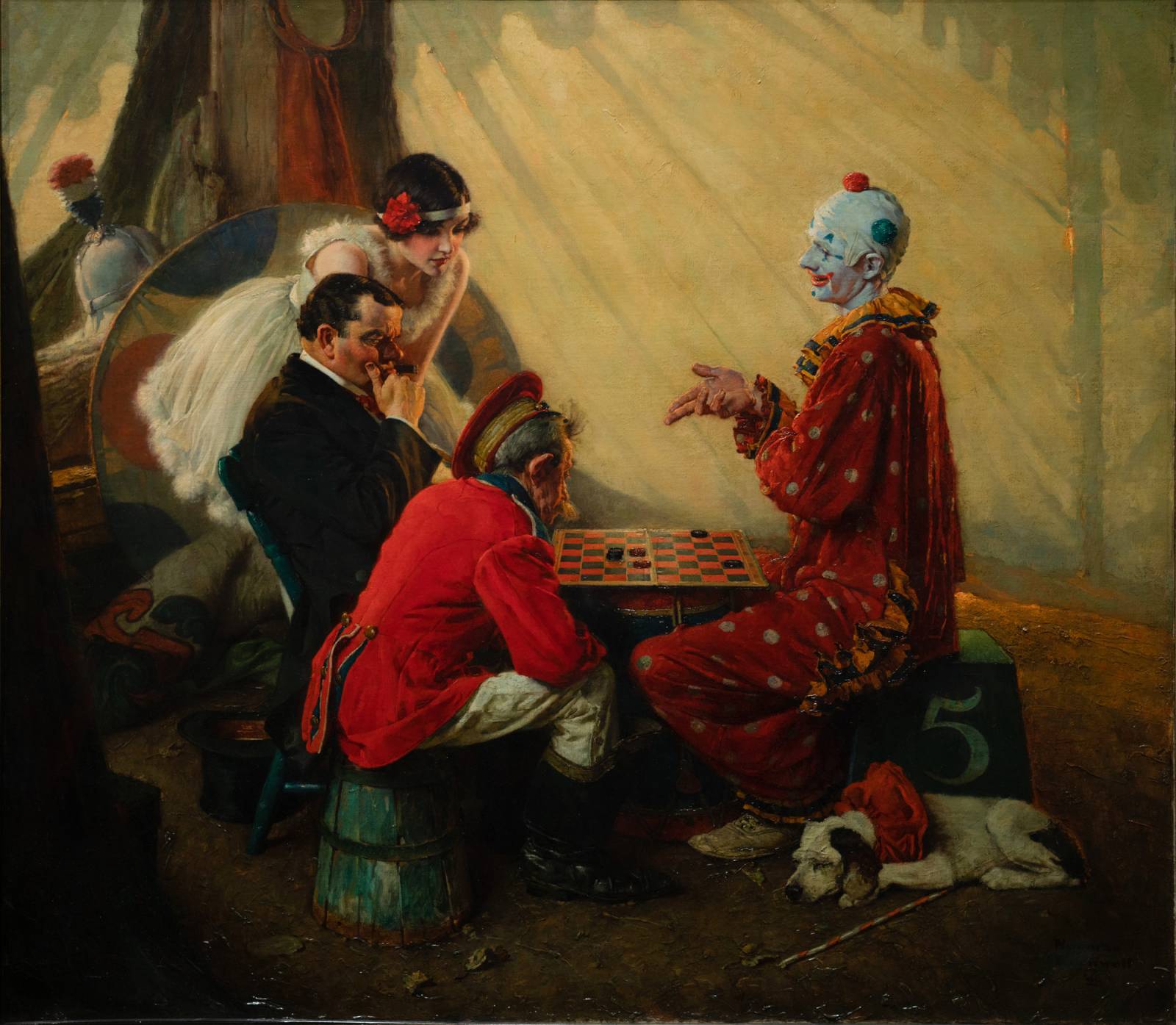
Rockwell created the painting when he was 34 years old. The painting is oil on linen and measures 35″x39″. It was an illustration done for Ladies’ Home Journal. It depicts a circus clown named Smokey Joe playing checkers with his friends. In the story Smokey was feeling down and his friends talked him into playing a game of checkers. They are letting him win in order to help him get some confidence back and give him a boost. I love the faces and expressions and the dog is awesome, with his red ruff.
Rockwell could really lay down the paint too. Look at those brushstrokes!
I love the soft face and edges of the woman in the painting. It’s neat to contrast it with the other faces. 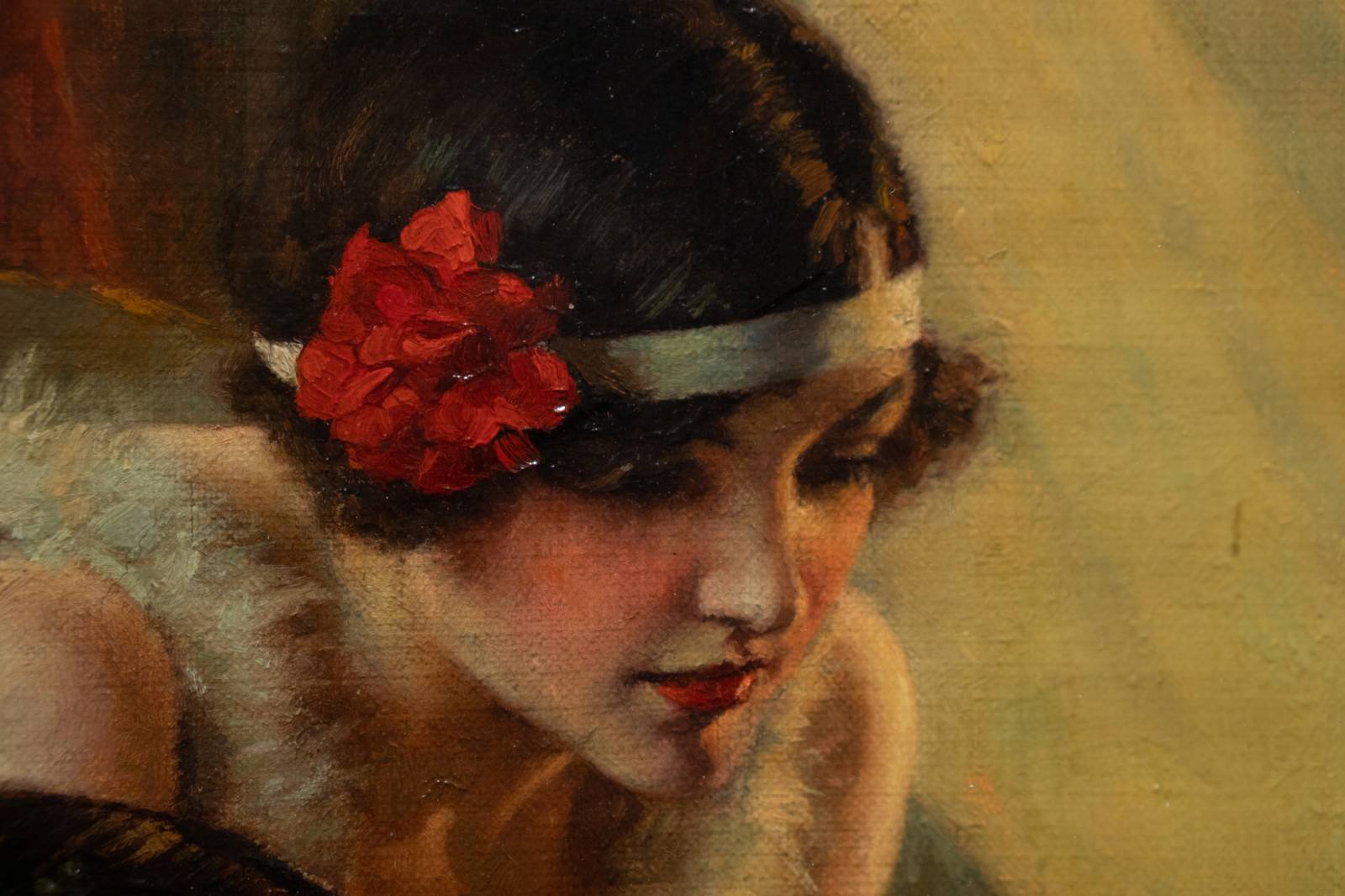
The impasto on the forehead of the man below is so rich and juicy looking. I also love the different saturations and temperatures of the portion of his face on the right versus the part in a cooler light on the left portion of his face. 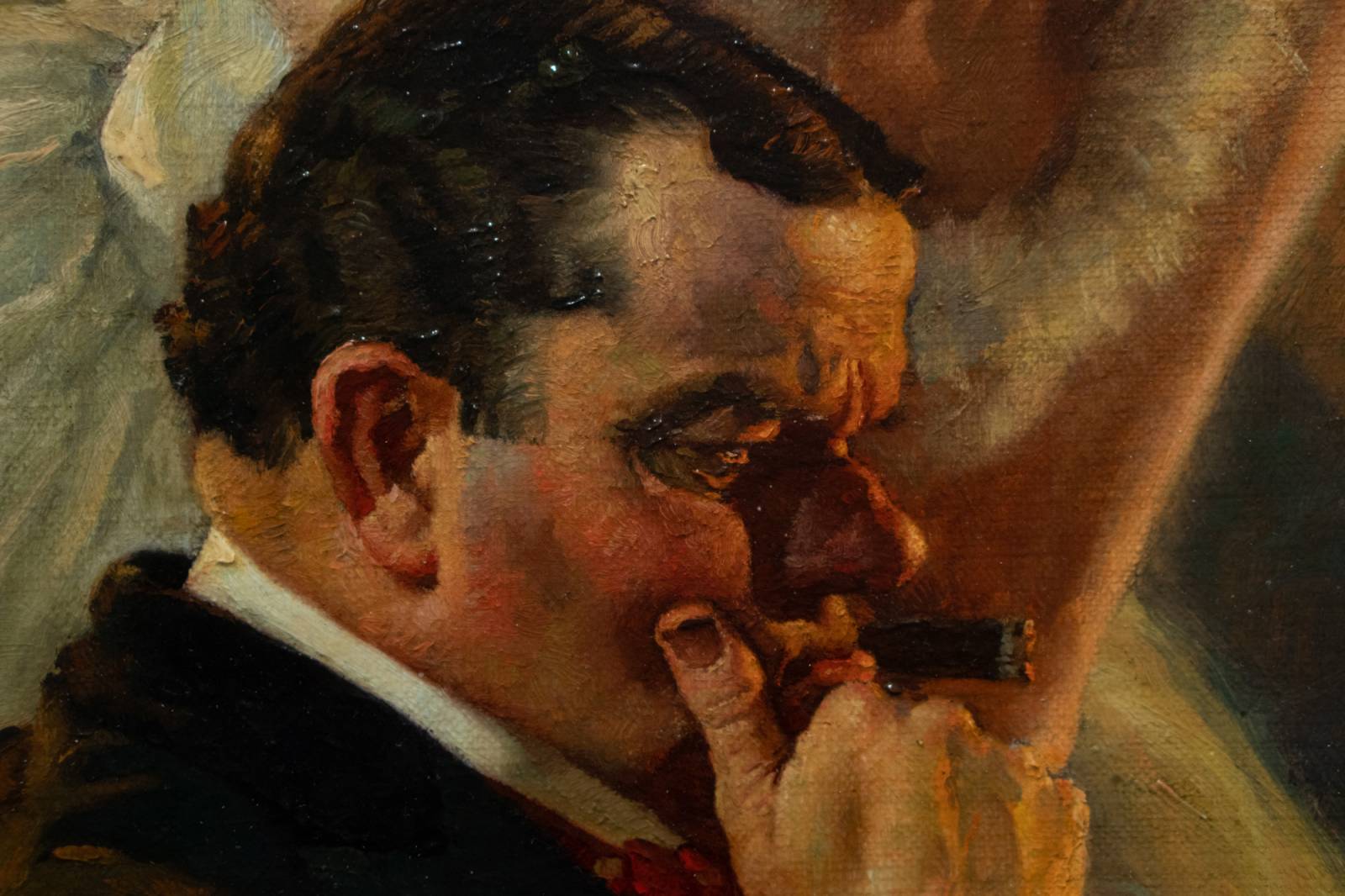
The model below was one of Rockwell’s favorites, James K. Van Brunt. He talks about him in My Adventures as an Illustrator (which is a great book, btw. I highly recommend it! You can get it for under $5 used). Here is a passage about the model from the Saturday Evening Post:
Norman Rockwell must have been captivated by the looks of James K. Van Brunt the day he showed up in Rockwell’s studio, pronouncing himself as a bold veteran of Fredericksburg and brave fighter of Indians forces. Standing 5 feet, 2 inches tall with a craggy face, knobby nose, and distinctive mustache, Van Brunt became one of Rockwell’s favorite models — posing for numerous covers. So many, in fact, that Post editors began to complain.
Rockwell eventually told Van Brunt he would no longer be able to use him as a model unless he shaved his mustache. He refused, then returned a couple weeks later and said he would do it for $10, which Rockwell paid. “I guess the notoriety he’d gained from posing for me had overcome his pride in his mustache,” Rockwell said. The result can be seen in The Old Sign Painter from February 6, 1926.


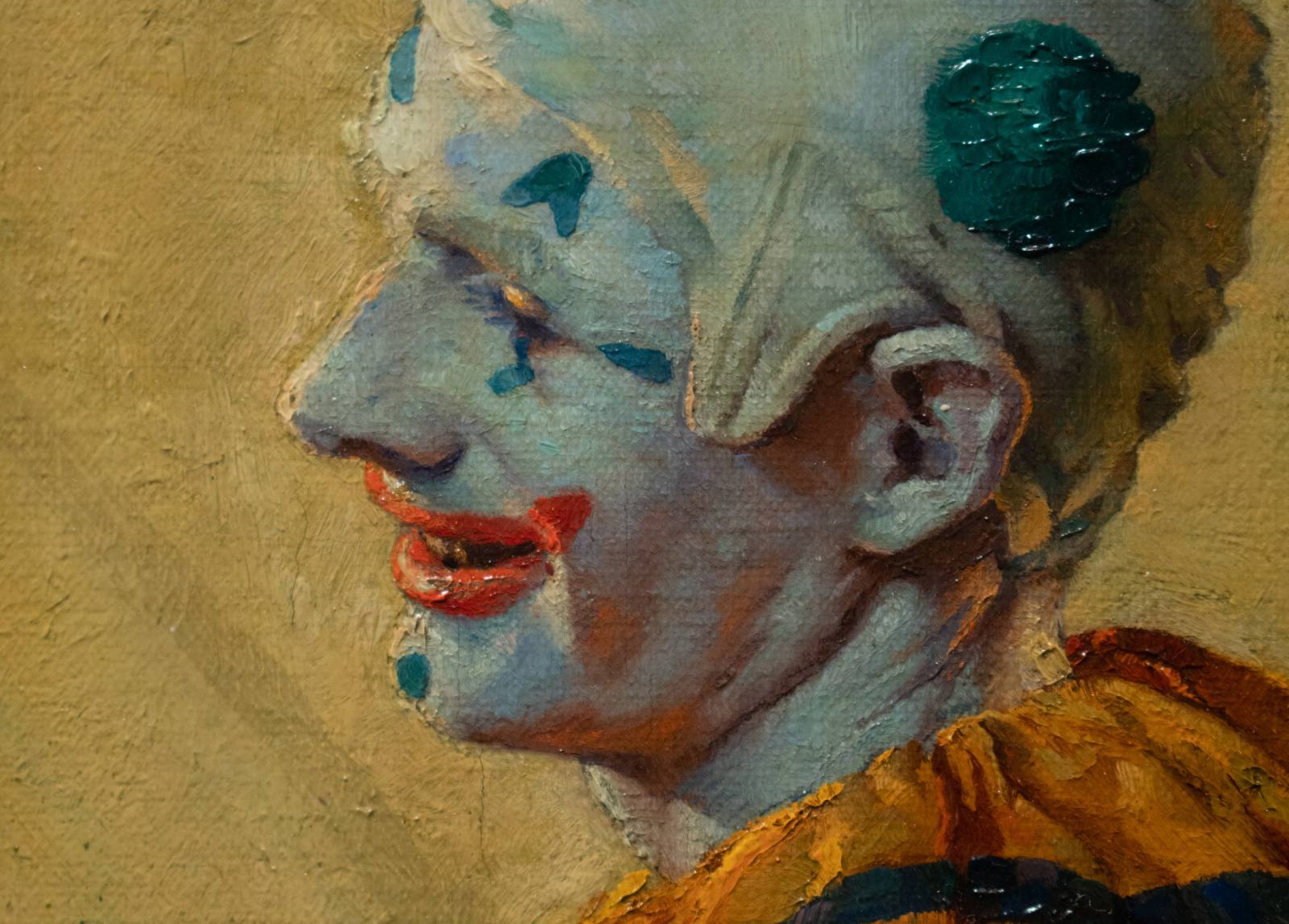
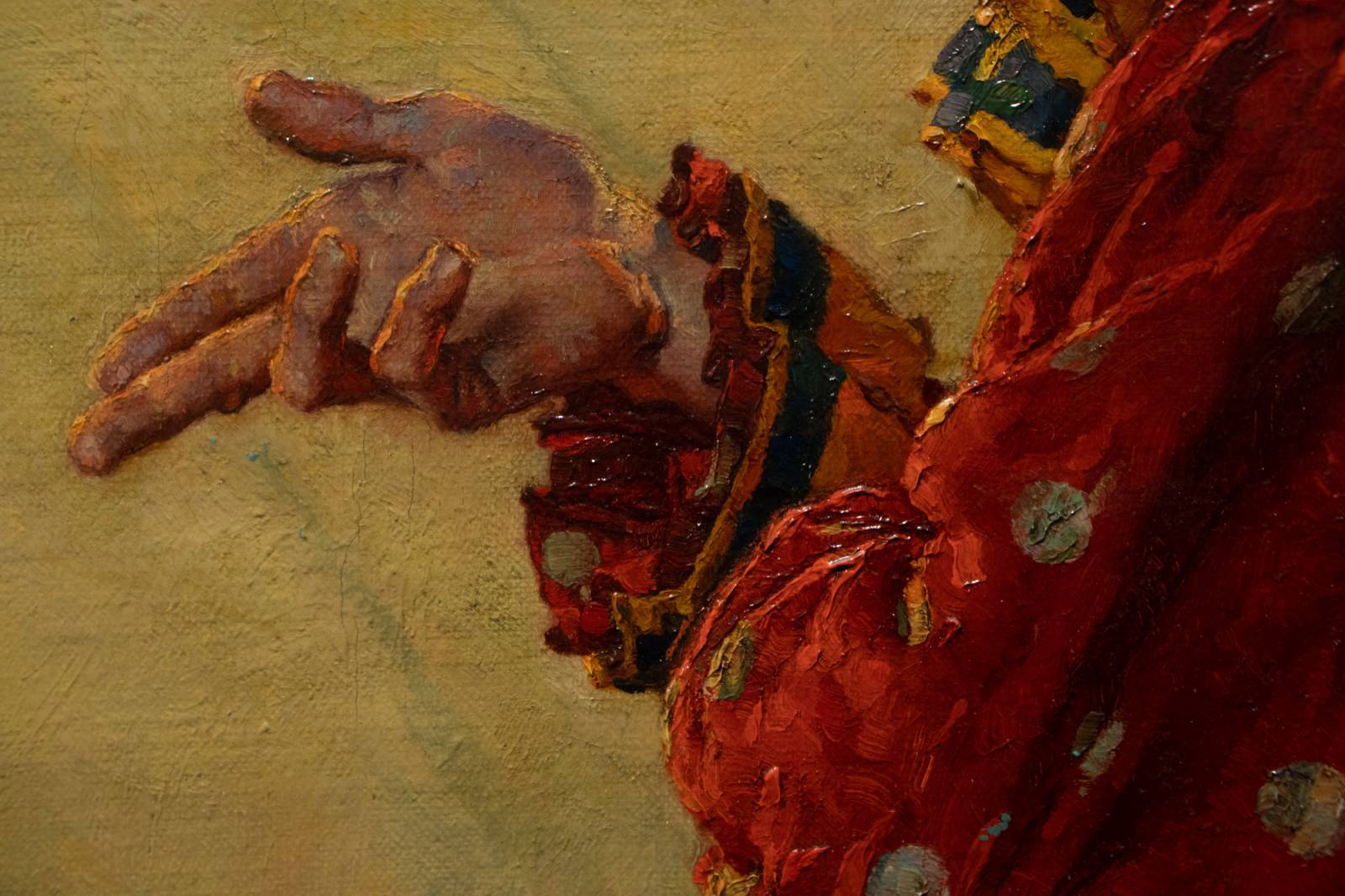
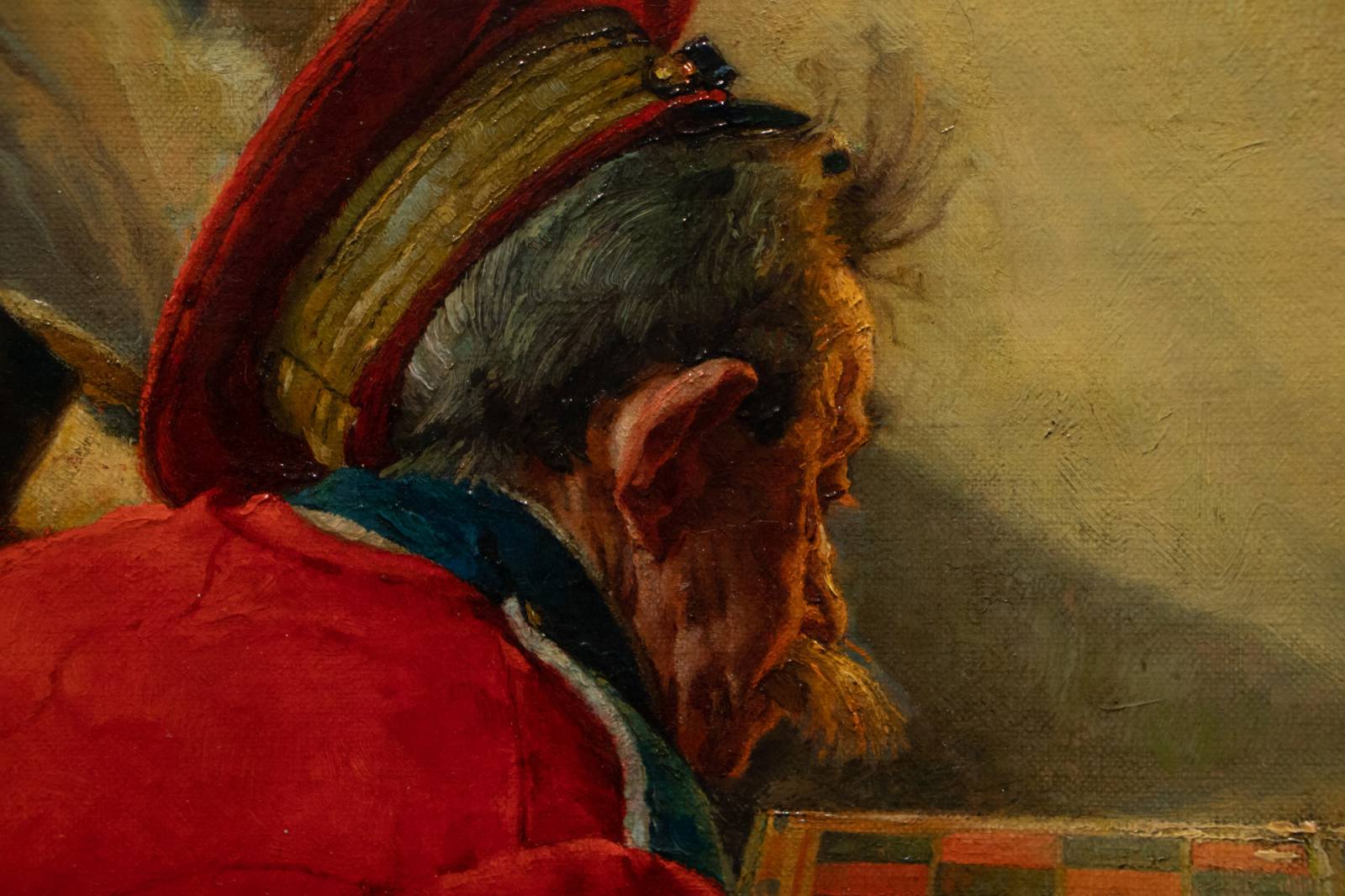
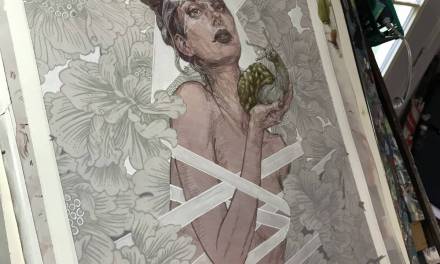
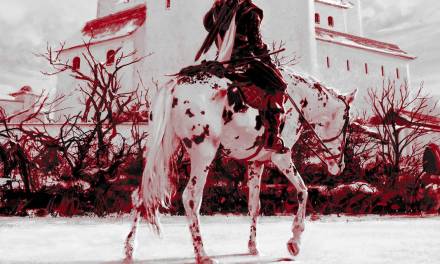
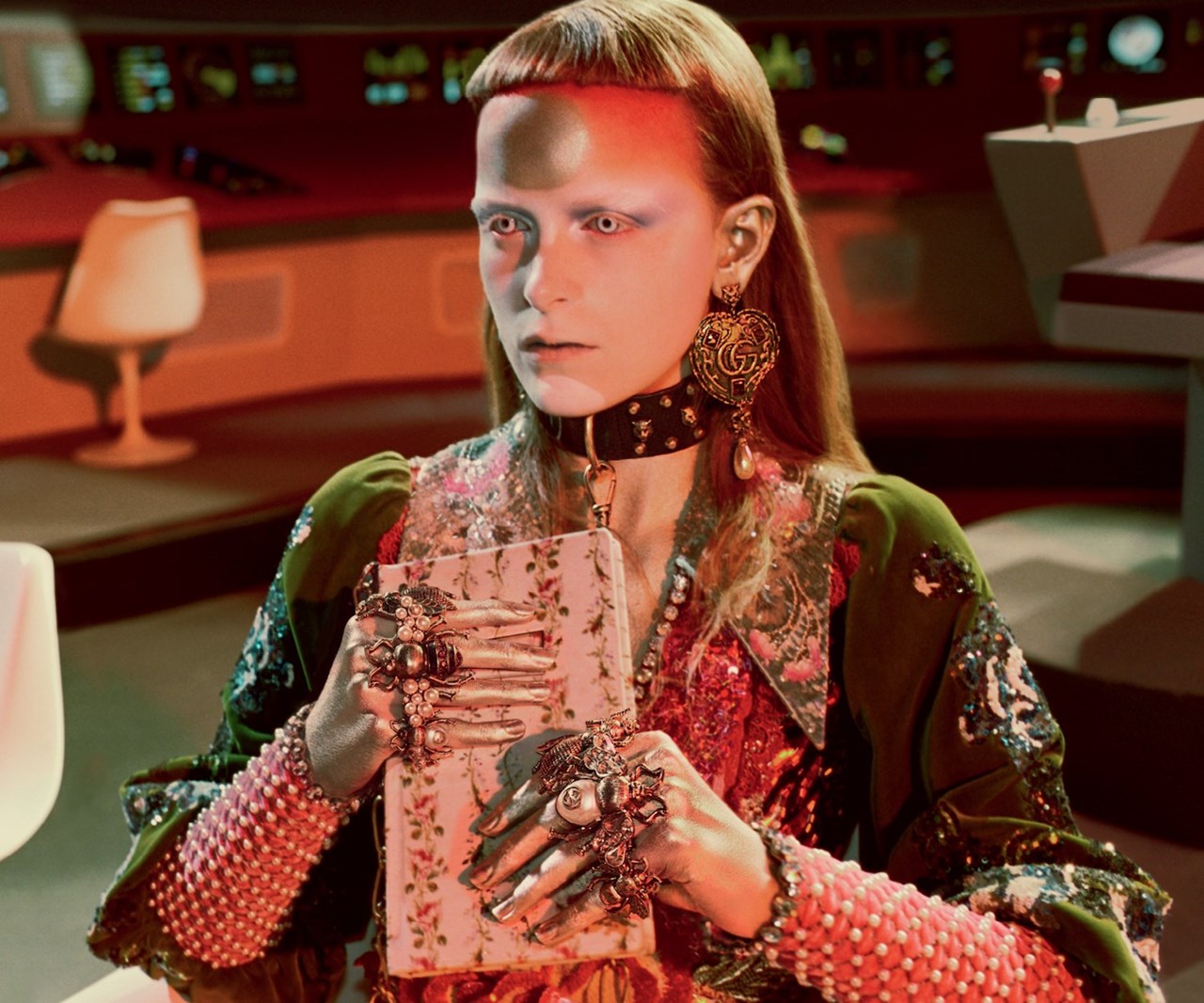
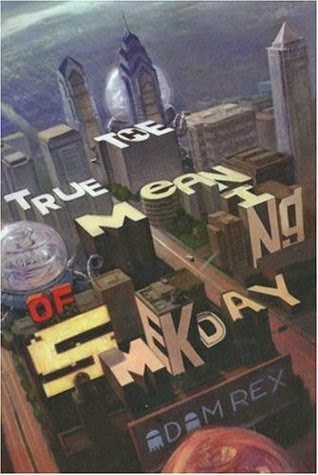
This one’s new to me! Great closeups, thanks for sharing them!
Thanks for sharing the closeups. It’s only now I start to understand the importance of looking at other people’s painting marks to learn.
Thanks for a post on one of my favorite Rockwells. What blew me away- along with the beautiful handling of color temperatures and exquisite edge work- was how he pre-texturized the canvas. If you look at the dog, he’s painted on top of lumps and clumps of paint that have nothing to do with the brush-strokes. All of that thought and effort to make a work of Art all the while knowing none of that was going to be picked up in the reproduction in the magazine. That’s why he was the King.
This painting was owned by the University of Bridgeport, CT where I used to teach, and it was on display for ages, just sitting in a hallway. I used to go stare at it all the time and wonder why it wasn’t in a museum.
It’s another perfectly cut diamond in the Great Fine Art Vault. Thank you Howard very much.
Great posts of arguably the greatest illustrator that ever lived… certainly the most famous and most popular with the public. I saw the original painting of the clown playing checkers at the Norman Rockwell Museum in Stockbridge, Mass. It is one of my favorites. Most people think of his work as super tight, noodling every detail, but not so. Seeing the originals or your closeups shown here proves that. When his paintings are reduced, they appear much tighter because his painting skills, precision in drawing and tonal variations, are so accurate, it translates as super realistic when reduced. He fought against overworking his paintings, but admitted he often felt it was a losing battle. Amazing, with his enormous fame and admiration most of his adult life, he was a dichotomy of enormous professional quality and amazing insight in his work, yet insecure about how good he really was, virtually all his life. He was torn between his great achievements in professional illustration, and whether he would have been a success as a fine artist. Unfortunately, illustration has been shot down for decades as a lesser form of art, by smug elitists in the art world. Bottom line… it’s the quality of a painting, not where it it will be seen. I think Rockwell chose the right career for his personality and temperament. I doubt his name or work would have become known and admired by so many people. I guess it always seems greener on the other side of the pasture.
In 1953, when I was 14, I wrote Norman Rockwell and told him I wanted to be an illustrator. He wrote back a very nice, encouraging letter, and sent me prints of his renown Four Freedom paintings. That was a major highlight in my life, and I went on to become a professional illustrator for over 40 years.
Wow! This shows Rockwell at his best. I have painted copies of Rockwell’s paintings and it is always a lesson
from the master and deeply enjoyable. I know that he took the utmost care in the composition, as well as the
details and models for his paintings. I have also copied Rembrandt and in my opinion Rockwell was as great.
His paintings are more complex than Rembrandt’s. Rembrandt was a huge influence on Rockwell and it shows
by the way he lighted his paintings.
PS. My paintings do show well by themselves, however next to the originals they are faint copies of the master’s.
Thanks so much for this. I have always loved this one. I think it is the gesture by the clown, and the reactive expressions on the other characters. Your closeups were wonderful.